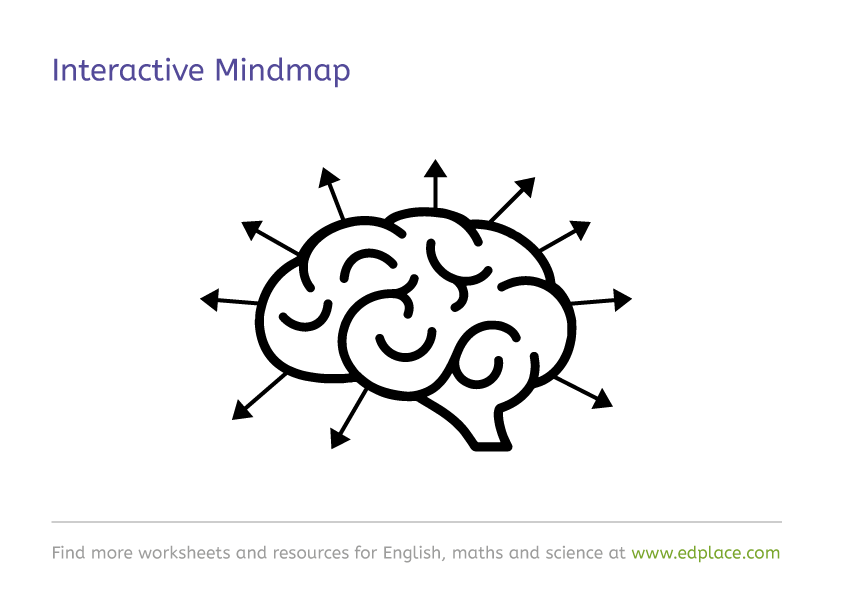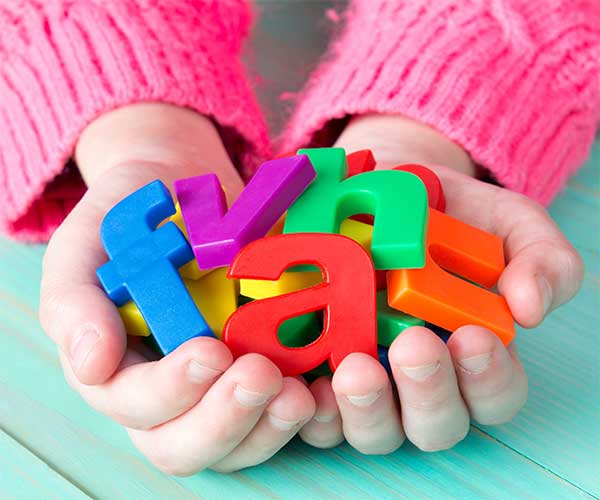Sneaky day-to-day maths
We’re all familiar with the tried and tested tactic of hiding vegetables in your child’s dinner, but how about hiding maths lessons within their day? We’re not exactly suggesting duplicity with your child’s education! But we’re just saying that you can weave mental maths skills into every area of your child’s day and boom! By the end of the day, you might not have done a single lesson, and yet they’ve maxed out on their numeracy skills without even realising it!
This is particularly great for homeschooling parents who have found themselves in a pinch on time or who otherwise want to put their child’s skills into a real-world context, giving them some very real experiences with their maths. Never again will you hear the words “what do I really need to do maths for anyway?”.
1. Out & About: Count! Count! Count!
Ok, so this one is probably a bit of a no brainer and something most parents do out of instinct alone. But when you’re working with a preschool or a primary-aged child get them counting and practising their number facts at every single opportunity. It might be counting cars, counting street lamps or counting how many jumps they make on the trampoline! How many steps does it take to get from downstairs to upstairs?
If you want to increase the challenge, instead of simply counting the cars they pass, why not challenge them to count the headlights or even the wheels and get them counting in 2s and 4s as you go.
For some awesome counting activities in KS1 and KS2 try our worksheets:
Let's learn about counting (Year 1)
Let's learn about counting (Year 4)
2. Out & About: The keepers of time
When you plan out your day ahead, why not hand over control of the time keeping to your child? This has the added advantages of taking the pressure off of you for once and also giving your child the opportunity to stretch their independence. Offer some incentive for time-telling practice by asking them to remember the time for a certain pleasant event, whether that’s swimming club or snack time.
Make their job for the day be to keep an eye on the time and tell you when you need to leave for the appointment or start prepping dinner. Whatever your daily routine, share it with your child and get them to help shoulder the responsibility of watching the clock.
For some awesome activities on telling the time in KS1 and KS2 try our worksheets:
Telling the time: Converting between formats
3. Out & About: Budget builders
So it’s that unenviable time of the week, the day you need to steel your nerve for a trip around the supermarket. It’s a battle sometimes; there might even be bribery involved. Why not hand the reigns over to your little one instead?
Could you allocate them a cash budget for the groceries and discuss the shopping list together. You could then allow your child to lead the way; they are in charge of getting everything on the list but also of keeping things within budget. A brilliant way to keep them engaged, build independence and life skills, practice addition and subtractions as well as problem-solving (if I buy this Twix, will I be able to still afford the eggs? Is there something else I can get instead?)
The added bonus is that you’ve turned the weekly shop from chore to classroom and you’ve got yourself an instant lesson on the go, with nothing but a clipboard and some patience required!
For some money matters activity ideas for KS1 and 2 check out these:
Let's learn about: Money (Year 2)
Counting cash: Change from £5, £10 and £20 (Year 3)

4. Out & About: Savvy shoppers
This one is closely linked to the above idea, but could also be used in shorter bursts here and there if you’re not keen to hand over the entire shopping trip to the management of your young one! Get your KS2 child’s brain working on percentages and differences by asking them to work out the amount of money and the final (or the original) price of items in the "10% off" basket.
Challenge your child to work out: If an item is three for £2, how much are you paying for the items individually? You could also get them to work out which chocolate bar is the most cost-efficient per gram, is it the smaller Dairy Milk or the GIANT one? (Let’s face it; we all know which way that one is going. Straight to our hips!)
Some of our savvy sheets on money and percentages across the key stages:
Percentages: What's 20%? (Year 5)
Calculating the value of a discount (Year 6)
What's the discount and final price? (Year 6)
5. In the bathroom: Volume & capacity
Hijacking bath time with a maths lesson? Surely no one is that cruel, we hear you cry! Well yes, we are suggesting you smuggle maths even into bath time, but we assure you we’re far from cruel! We’ve yet to meet a child that doesn’t enjoy pouring water from container to container, indeed so many bath toys are designed with just that compulsion in mind! So why not swap out the toys for some plastic measuring jugs, spoons or cups?
Challenge your child to find out how many cups fit into that jug, or how many spoons fit into the cup? If your child is older why not ask them to investigate how many millilitres the cup holds, even though it’s got no scale on the side?
Why not pour over these activity ideas:
Measuring capacity and volume: How much from how many? (Year 2)
Units of measure: Converting litres and millilitres (Year 5)
6. Out & About: Timetables
Next time you’re heading out for the day for a planned activity, if your child is already taking charge of the time keeping why not get them to take over the time table as well? If you’re used to driving around everywhere, can you plan a day where you and your child could catch the bus to the shops? Or the train into the city?
Ask your child to study the timetable, find out when the best train or bus time will be. What time will you arrive? How long will it take to get there, and what are the options for your return journey?
As much as possible, leave the planning and the transport in your child’s hands once you’ve given them the timetable. Give them the confidence to prove to themselves that they can do it, be there to guide but only step in if needed!
Keep an eye on the clock with this KS2 timetable activity:
Interpreting timetables: When's the next train? (Year 5)
You can also use our visual supportive resources to help your child plan these activities
In the kitchen: Measuring mass
Ok, so you might be feeling a bit harried as you cook dinner, and you might not be willing or able to upset the finely tuned machine by allowing your hangry child to help with the cooking (according to the Oxford living dictionary ‘hangry’ is an adjective meaning ‘bad tempered or irritable as a result of hunger’. Beware.).
But you could schedule some baking into your schooling day and cover not only life skills and home economics, but also some incredibly rich maths opportunities as well.
Get your child to follow the recipe and the instructions, step by step. Have them read the scales to check the ingredient amounts are correct. If you’re wanting to challenge your older child why not ask them to convert from grams to kilograms, or to another unit altogether. If you’re feeling especially challenging why not find a recipe that uses different units altogether (such as ‘cups’ in an American recipe) and challenge your child to find a formula for converting the units into a measure we use here in the UK?
No matter how long it takes you both to get there, the cakes will make it all worthwhile in the end!
Measuring mass and volume: reading scales (Year 3)
Units of measure: Kilograms and grams (Year 5)
8. Anywhere: Angle & shape hunters
“We’re going on an angle hunt, we’re going to catch a big one!” Ok, so we may have borrowed a little from Michael Rosen’s We’re Going on a Bear Hunt here, but with good reason! Using a book your child is familiar with and loves can really help to engage them.
When your little one is learning about shapes and angles why not take them out and about on a shape hunt (book recital optional, as are the bears!) Get your child thinking outside the box to find the shapes they know in the most unlikely of places; in nature, in the city or in the car.
With your angle hunt, you can make it as challenging or as easy as you like! For younger children, you could simply go on a right angle hunt before progressing on to looking for ‘bigger than’ or ‘smaller than’ angles. With your older child can they make educated guesses as to how many degrees they think an angle might be? Better yet, get them to check their guess with a protractor, access permitting!
Know you 2D shapes: What is it called? (Year 1)
Know your angles: Smaller or larger than a right angle? (Year 3)
Geometry: What's the angle? (Year 6)
In the home: Measuring length
There are jobs to do around the house and garden, the shed roof needs re-felting and that new canvas print needs wall mounting. You could wait for your child to be otherwise engaged or you could seize yet another maths opportunity and have them help you out.
Can they use the tape measure to help you mark out the roof felt? Can they use the ruler and a spirit level to help you work out where the canvas should go? You could then challenge your older child to find the conversion and measure in one unit before converting them to the other to keep them occupied and safe while you do the dangerous stuff!
Measurement: How many metres or centimetres? (Year 3)
Conversion: Inches and centimetres (Year 6)
Out & About: Flight of the navigator
You’re heading into town. Instead of just walking the same old path, can you find a map of the town? A printable street map that your child can draw on would be ideal! Hand over control of your journey and direction to your child.
Encourage them to read the map and to direct you to where you are hoping to go. This is a great chance to develop their mathematical vocabulary and to help them make their instructions concise.
Assuming your child doesn’t get car sick, why not switch off the satnav and invest in ye olde road map and ask your child to navigate? You could sit down together before you leave and plot out the route and then rely on them to give you directions in the car. It doesn’t matter if you end up somewhere entirely different (unless you’re in a rush of course but we don’t recommend this activity if you’re under pressure to get to where you’re going!) your child will have had some superb practice at giving instructions, reading a map and understanding directions, and they’ll probably have had a blast while they did it as well!
Position and direction: Identifying places (Year 1)
Position and direction: Find the treasure (Year 4)












